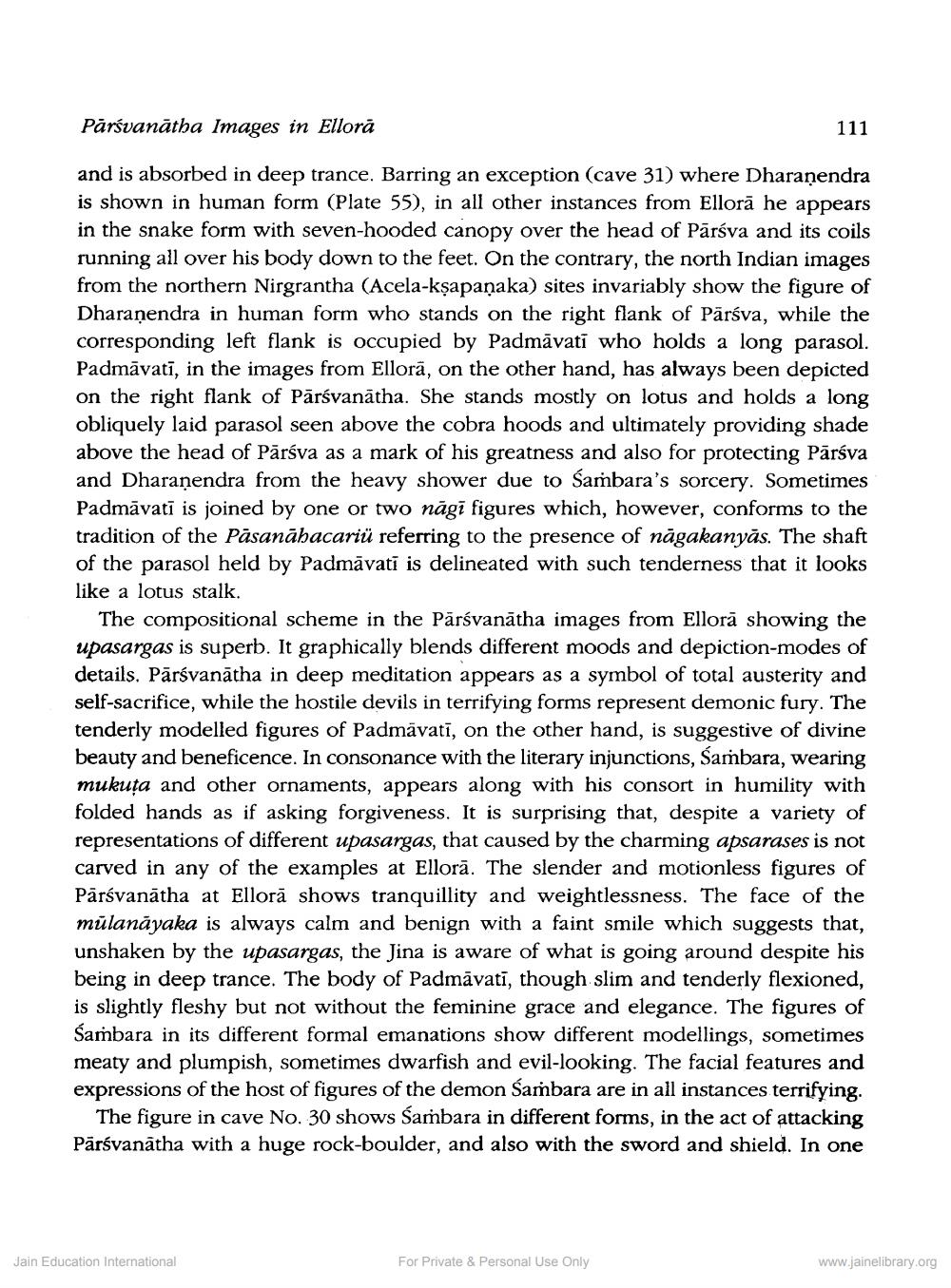________________
Pārsvanātha Images in Ellora
111
and is absorbed in deep trance. Barring an exception (cave 31) where Dharanendra is shown in human form (Plate 55), in all other instances from Ellorā he appears in the snake form with seven-hooded canopy over the head of Pārsva and its coils running all over his body down to the feet. On the contrary, the north Indian images from the northern Nirgrantha (Acela-kşapaņaka) sites invariably show the figure of Dharanendra in human form who stands on the right flank of Pārsva, while the corresponding left flank is occupied by Padmāvati who holds a long parasol. Padmāvatī, in the images from Ellorā, on the other hand, has always been depicted on the right flank of Pārsvanātha. She stands mostly on lotus and holds a long obliquely laid parasol seen above the cobra hoods and ultimately providing shade above the head of Pārsva as a mark of his greatness and also for protecting Pārsva and Dharanendra from the heavy shower due to Sambara's sorcery. Sometimes Padmāvati is joined by one or two nági figures which, however, conforms to the tradition of the Pāsanābacariü referring to the presence of nāgakanyās. The shaft of the parasol held by Padmāvati is delineated with such tenderness that it looks like a lotus stalk.
The compositional scheme in the Pārsvanātha images from Ellorā showing the upasargas is superb. It graphically blends different moods and depiction-modes of details. Pārsvanātha in deep meditation appears as a symbol of total austerity and self-sacrifice, while the hostile devils in terrifying forms represent demonic fury. The tenderly modelled figures of Padmāvatī, on the other hand, is suggestive of divine beauty and beneficence. In consonance with the literary injunctions, Sambara, wearing mukuta and other ornaments, appears along with his consort in humility with folded hands as if asking forgiveness. It is surprising that, despite a variety of representations of different upasargas, that caused by the charming apsarases is not carved in any of the examples at Ellorā. The slender and motionless figures of Pārsvanātha at Ellorā shows tranquillity and weightlessness. The face of the mūlanayaka is always calm and benign with a faint smile which suggests that, unshaken by the upasargas, the Jina is aware of what is going around despite his being in deep trance. The body of Padmāvatī, though slim and tenderly flexioned, is slightly fleshy but not without the feminine grace and elegance. The figures of Sambara in its different formal emanations show different modellings, sometimes meaty and plumpish, sometimes dwarfish and evil-looking. The facial features and expressions of the host of figures of the demon Sambara are in all instances terrifying.
The figure in cave No. 30 shows Sambara in different forms, in the act of attacking Pārsvanātha with a huge rock-boulder, and also with the sword and shield. In one
Jain Education International
For Private & Personal Use Only
www.jainelibrary.org




